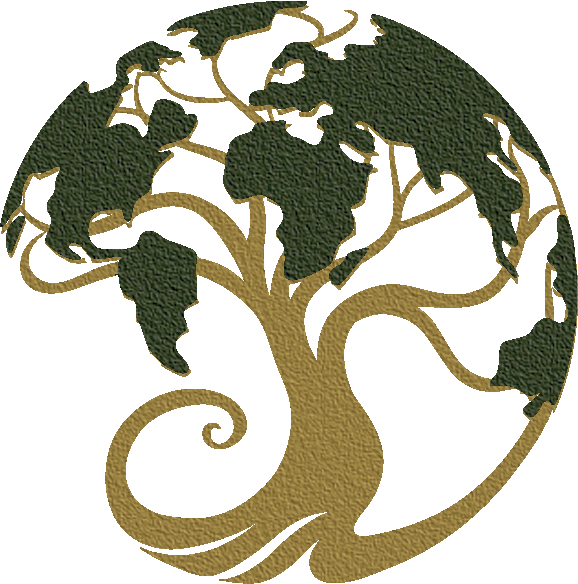Shifting the Paradigm – Pattern Language of Plant Medicine
Energetic Herbalism: Understanding Pattern Language & Plant Intelligence
We are living in a fast-paced world where there is a great need for shifting the paradigm. The plant world can help us do that very well, by integrating local, wild and native plants that grow all around us into our lives. Their form of communication is the chemistry – the nutrients that move and circulate through the plant. This is what shifts an individual when the individual takes the right plant at the right moment in time.
The energetic system of herbal medicine and energetics is pretty much universal throughout the world’s great systems of herbal medicine. Whether you’re talking about Ayurveda, Traditional Chinese Medicine, Unani-Tibb, Campo from Japan, Jammu from Indonesia, Cherokee Medicine, whatever tradition we’re talking about, there’s usually a system of energetics and this is how you match the herb to the person.
Hippocrates said more than 2000 years ago, it’s more important to know the person that has the disease than the disease the person has. He was right. And so, what you get with a lot of American herbal medicine up until relatively recently, is “this herb’s good for a headache”, “this herb’s good for depression”.One of the core principles in this ancient herbal traditional systems is they all worked with the elements, which is energetics. The herbal energetic language a highly refined system of analysis, evaluation, therapeutics, formulation, and administration of plant medicines. The renaissance of herbal energetics amongst Western herbalists over the past 25 to 30 years has seen an even more recent surge of popularity amongst a subsection of this inspired group of plant lovers and herbal medicine enthusiasts. The elements are the most universally recognized pattern used in herbal traditions throughout the world as mentioned above. The five elements of nature are Air, Fire, Water, Earth and Ether they have been used to classify plants, assess health and sickness, formulate plant medicines, and deepen in ones understanding of Nature as a whole.
The core principles of Energetic Herbalism and the essential aspects of a wholistic herbal practice. Through the Five Elements, we see the underlying patterns in nature, the seasons, the human constitution, anatomy and physiology, psychological temperaments and spiritual evolution, as well as the medicinal properties of plants, their organ and tissue affinities, actions, and even their pharmacology and actions upon the soul.
This energetic system of working to understand the pattern language of plants fits well with understanding the pattern language of our inner landscape and the pattern that emerges with bodily symptoms and disease. This methodology helps us understand in making our dietary and plant medicines individual specific. This means specific to the individual’s age, occupation, season, etc.
Here are a few benefits to constitutional assessment; this is usually done through observation of tongue, pulse and iris.
Benefits:
Easy to Learn Technique for Health Practitioners & the Layman
Fast Client Assessment Method
No Equipment Needed
80% Accuracy
See Healthy Changes Quickly
Treatment Protocols Using Ayurvedic Principles in Whole Foods & Herbs
Tongue diagnosis is a vital diagnostic Ayurvedic tool for assessing the current health of a patient and providing a basis for prognosis
It also informs about the underlying challenges of the patient’s constitution.
The tongue gives very accurate information about the state of Prana and blood, progression and regression of the disease, degree of heat and cold and the depth of penetration of a pathogenic imbalance.
80 percent accuracy before any blood tests, hair analyses, or urinalysis results come back form labs.
The energetic system of plant medicine consists of the following seven aspects:
1) Constitutional System
The five elements influence and impact your physical body and it’s various organs, systems and tissues, as well as your psychological temperament.
2) Direct Perception of the Elements
An empowering practice is to directly perceive the intelligence of the elements within nature, the seasons, yourself, and the properties of edible and medicinal plants.
3) Ancient Herbal Traditions
The ancient and modern traditions of herbalism utilized the five elements in their diagnostics, therapeutics, and central therapeutic philosophy.
4) Natural Medicine
The five elements form the fundamentals of a truly wholistic practise of natural medicine, not just through using plants, but also through lifestyle factors such as diet, exercise, psychosomatic well being, and all other aspects of life.
5) Plant Classification
Each plant corresponds to the elements through their chemistry, actions, organ, system and tissue affinities, physical structure and morphology, and how they impact our psychology, emotions, and spiritual evolution.
6) Energetic Medicine-Making Methodology
The ancient herbal practitioners used the elements in their philosophy of nature, extraction of plants and the creation of synergetic plant medicines.
7) Bioregional Herbalism: A Truly Regenerative System of Plant Medicine
Bioregional herbalism originates from the concept that a truly wholistic style of regenerative medicine needs to draw on accessible natural resources within an individual’s local area. This means that the herbs you take do not make extra stress of resources in terms of manufacture and transportation. Many traditional herbal educators and practitioners believe that any health imbalance is best treated within the same environment where the illness originated. An energetic system to work well in a sustainable or even better a regenerative way it really adds another dimension if the plants being administered are local, wild and native to your bioregion. Bioregional herbalism is ecological herbalism at its core. I consider this seventh aspect of the energetic herbalism of working with the elements key in supporting the paradigm shift towards a regenerative future.

